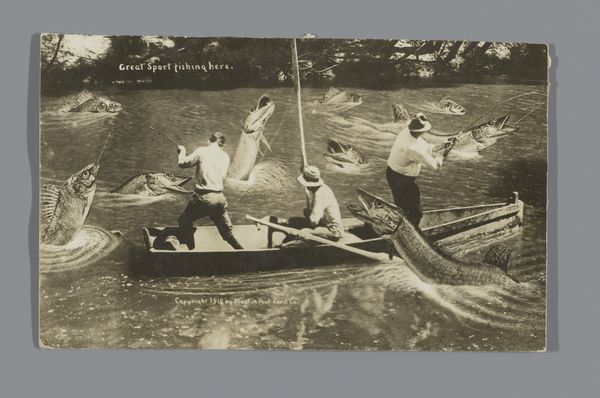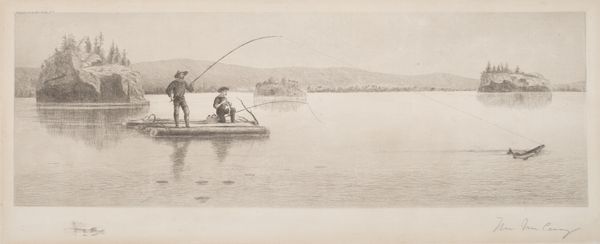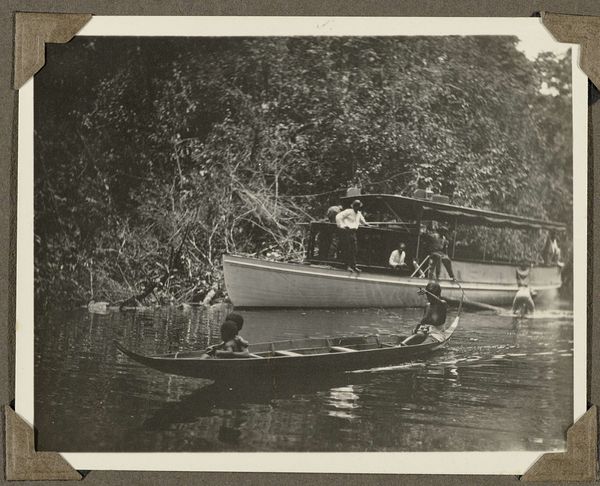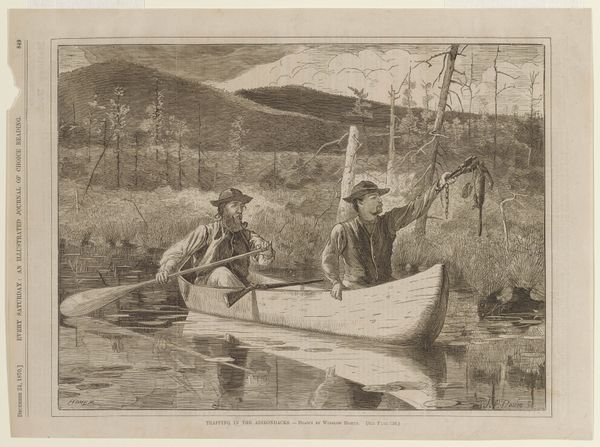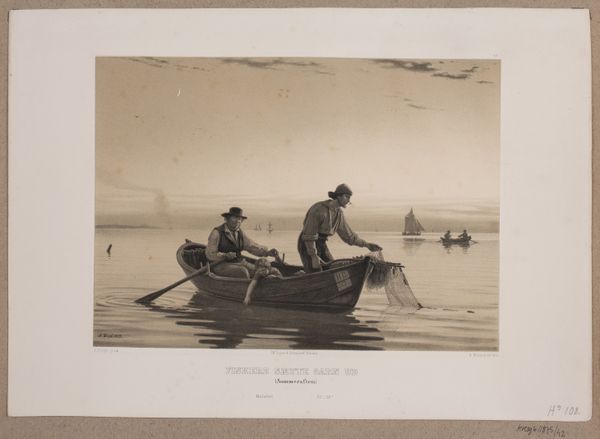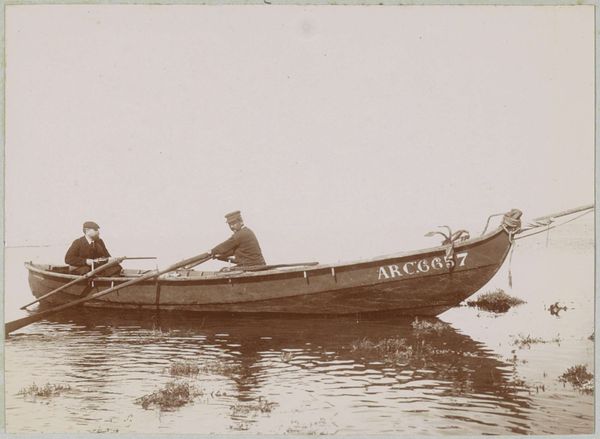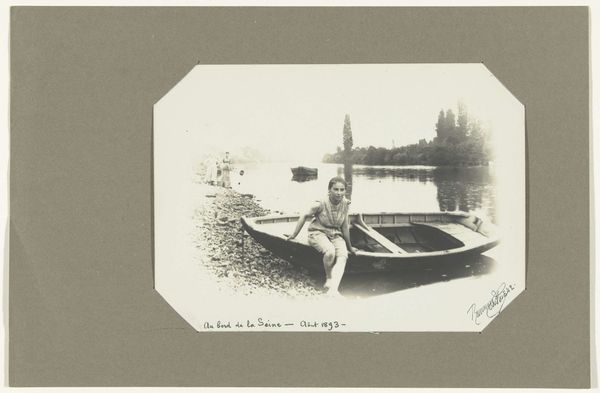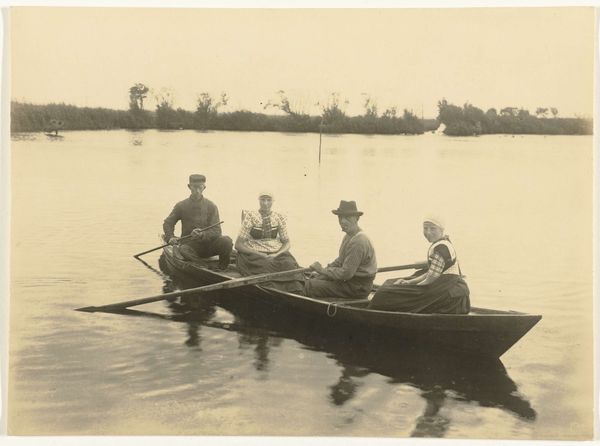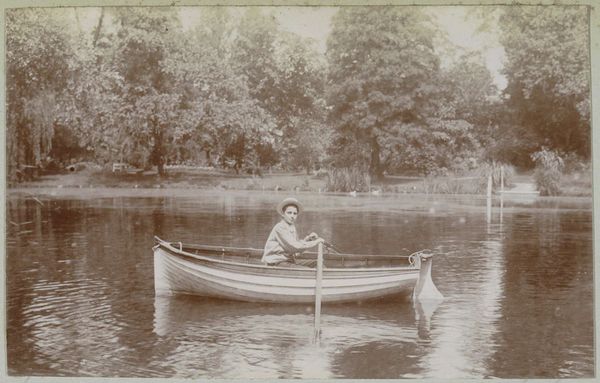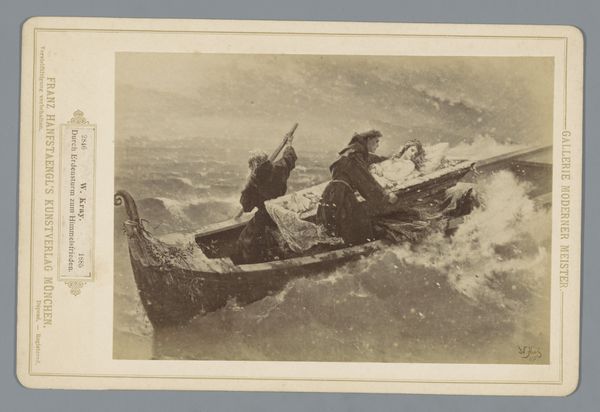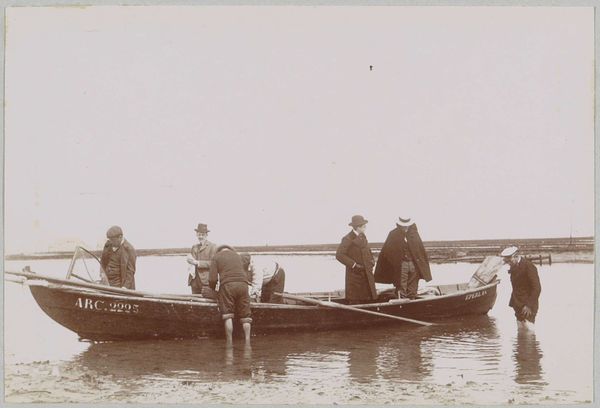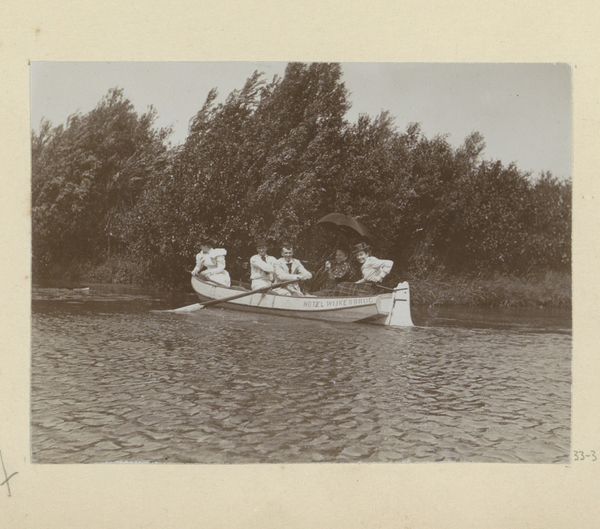
drawing, print, etching, pencil
#
drawing
# print
#
etching
#
landscape
#
pencil drawing
#
pencil
#
men
#
genre-painting
#
realism
Dimensions: image: 16 x 22 1/16 in. (40.6 x 56 cm) sheet: 21 5/8 x 28 1/8 in. (54.9 x 71.5 cm)
Copyright: Public Domain
Curator: Here we see Winslow Homer's etching from 1889, "Fly Fishing, Saranac Lake," a scene of men fishing rendered in monochrome. Editor: It feels so immediate, almost photographic. The composition is striking, the boat sharply cutting the reflection in the water. There is a strong diagonal line created by the fishing rod and the net, drawing our eyes across the plane. Curator: The etching technique itself is key. Notice how Homer uses cross-hatching and varying line weights to create depth and texture, mimicking the play of light on water, while alluding to a longer tradition of angling as masculine ritual. The figures also echo archetypes like 'man versus nature.' Editor: Right, it's less about the actual fishing and more about the interplay of form. Consider the dark mass of the boat's reflection against the subtly etched surface of the water. The textures alone feel expressive. Even the tiny detail of the fishing line. It almost vibrates visually. Curator: Think too about the cultural context: turn-of-the-century America’s fascination with the wilderness and its restorative properties. The fisherman is not just catching fish, he's perhaps enacting an ideal of rugged independence in the face of industrializing society. Editor: I'm compelled by the way he captures light, almost dematerializing forms toward the horizon line. See, even though it’s black and white, you get the distinct sense of atmosphere through the careful manipulation of the printing. Curator: Absolutely. Homer tapped into the popular imagination, framing the wilderness as a crucible for the American identity. These motifs run through many of his seascapes and hunting scenes. Editor: It's tempting to get lost in the detail, but the stark simplicity and strong contrasts pull us back to the picture as a unified whole. Homer uses this approach as a way to construct the cultural imagery. Curator: Indeed, the etching's lasting power lies in its ability to capture these culturally loaded symbols, echoing ideas still relevant today. Editor: I see now the visual language speaks beyond just surface appearances—its a whole mode of art. Thanks.
Comments
No comments
Be the first to comment and join the conversation on the ultimate creative platform.
